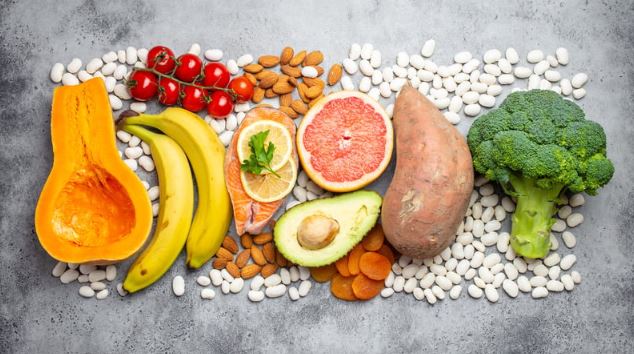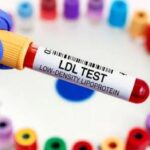Introduction
Food cravings are something we all experience. Whether it’s a sudden urge for chocolate or a persistent desire for salty snacks, cravings can be powerful and often seem random. However, what if these cravings are actually your body’s way of signaling nutrient deficiencies? Understanding the underlying reasons for food cravings can help you make healthier choices and address potential nutritional gaps. In this comprehensive article, we will explore common food cravings, the nutrients they might be associated with, and how to balance your diet accordingly.

Understanding Food Cravings
What Are Food Cravings?
Food cravings are intense desires to eat specific foods. These cravings can be driven by various factors, including emotional states, hormonal changes, and physiological needs. While occasional cravings are normal, persistent cravings might indicate a deficiency in certain nutrients.
The Science Behind Cravings
Several theories explain why we experience food cravings:
- Nutritional Deficiencies: The body may crave specific foods to compensate for a lack of certain nutrients.
- Psychological Factors: Stress, boredom, or emotional distress can trigger cravings as a form of comfort or distraction.
- Hormonal Changes: Hormonal fluctuations, particularly during menstrual cycles or pregnancy, can lead to specific cravings.
- Brain Chemistry: Cravings can be linked to the release of neurotransmitters like dopamine, which create pleasurable sensations when consuming certain foods.
Common Cravings and Their Nutrient Implications
1. Craving for Chocolate
Possible Nutrient Deficiency: Magnesium
Explanation: Chocolate cravings are often linked to magnesium deficiency. Magnesium is essential for many bodily functions, including muscle and nerve function, blood glucose control, and bone health.
Healthy Alternatives:
- Nuts and Seeds: Almonds, pumpkin seeds, and sunflower seeds are rich in magnesium.
- Leafy Greens: Spinach, Swiss chard, and kale provide good amounts of magnesium.
- Whole Grains: Brown rice, quinoa, and oats are excellent sources of magnesium.
2. Craving for Salty Foods
Possible Nutrient Deficiency: Sodium, Chloride, or Electrolyte Imbalance
Explanation: A craving for salty foods may indicate an electrolyte imbalance or a deficiency in minerals like sodium and chloride, which are crucial for maintaining fluid balance and nerve function.
Healthy Alternatives:
- Seaweed: Naturally high in iodine and other minerals.
- Pickles: Fermented pickles can provide probiotics and satisfy salt cravings.
- Coconut Water: A natural source of electrolytes.
3. Craving for Red Meat
Possible Nutrient Deficiency: Iron, Zinc, or Vitamin B12
Explanation: Red meat cravings often signal a deficiency in iron, zinc, or vitamin B12, all of which are vital for red blood cell production, immune function, and energy metabolism.
Healthy Alternatives:
- Legumes: Lentils, chickpeas, and beans are good sources of iron and zinc.
- Fortified Cereals: Many cereals are fortified with iron and B vitamins.
- Lean Poultry and Fish: Provide iron, zinc, and vitamin B12 without the high saturated fat content of red meat.
4. Craving for Sweets
Possible Nutrient Deficiency: Chromium or Tryptophan
Explanation: A sweet tooth may indicate a deficiency in chromium, a mineral that helps regulate blood sugar levels, or tryptophan, an amino acid involved in serotonin production.
Healthy Alternatives:
- Fruits: Natural sugars in fruits like berries, apples, and oranges can satisfy sweet cravings while providing fiber and vitamins.
- Nuts and Seeds: Rich in chromium and healthy fats.
- Dark Chocolate: Contains less sugar and more antioxidants than milk chocolate.
5. Craving for Dairy Products
Possible Nutrient Deficiency: Calcium or Vitamin D
Explanation: Cravings for dairy products might indicate a need for calcium or vitamin D, essential for bone health and immune function.
Healthy Alternatives:
- Leafy Greens: Kale, broccoli, and collard greens are high in calcium.
- Fortified Plant Milks: Almond, soy, and oat milk often contain added calcium and vitamin D.
- Fatty Fish: Salmon and sardines are excellent sources of vitamin D.
6. Craving for Spicy Foods
Possible Nutrient Deficiency: Capsaicin or an Endorphin Boost
Explanation: While not directly linked to a nutrient deficiency, a craving for spicy foods may stem from a desire for the endorphin rush that capsaicin (the active component in chili peppers) provides.
Healthy Alternatives:
- Spicy Peppers: Jalapenos, habaneros, and cayenne peppers can satisfy the craving with added health benefits.
- Ginger and Garlic: Provide a spicy kick and numerous health benefits.
7. Craving for Carbohydrates
Possible Nutrient Deficiency: Serotonin or Energy Needs
Explanation: Carbohydrate cravings might be related to low serotonin levels, as carbs can boost the production of this mood-regulating neurotransmitter, or a need for a quick energy source.
Healthy Alternatives:
- Whole Grains: Brown rice, quinoa, and whole wheat pasta provide complex carbohydrates that stabilize blood sugar levels.
- Sweet Potatoes: Rich in fiber and vitamins, they offer a healthy carb source.
- Legumes: Beans and lentils provide carbs along with protein and fiber.
Addressing Nutrient Deficiencies to Manage Cravings
1. Balanced Diet
Eating a balanced diet rich in fruits, vegetables, whole grains, lean proteins, and healthy fats ensures you get a wide range of nutrients. This variety helps prevent deficiencies that can lead to cravings.
2. Regular Meals and Snacks
Skipping meals can lead to nutrient deficiencies and increased cravings. Eating regular, balanced meals and snacks helps maintain stable blood sugar levels and provides consistent nutrient intake.
3. Hydration
Sometimes, thirst can be mistaken for hunger or cravings. Drinking plenty of water throughout the day can help reduce unnecessary cravings.
4. Mindful Eating
Paying attention to your hunger and fullness cues can help you make healthier food choices and avoid emotional eating that leads to cravings.
5. Supplementation
In some cases, dietary supplements may be necessary to address specific nutrient deficiencies. Consult a healthcare provider before starting any supplementation.
Real-Life Success Stories
Case Study 1: Sarah’s Sweet Cravings
Sarah, a 30-year-old office worker, struggled with intense sweet cravings every afternoon. After consulting a nutritionist, she discovered she was deficient in chromium. By incorporating more chromium-rich foods like broccoli, grape juice, and oats into her diet, Sarah’s sweet cravings significantly reduced within a few weeks.
Case Study 2: John’s Red Meat Cravings
John, a 45-year-old fitness enthusiast, frequently craved red meat. Blood tests revealed low iron levels. John adjusted his diet to include more iron-rich plant foods like lentils, spinach, and pumpkin seeds. He also started taking a vitamin C supplement to enhance iron absorption. His cravings for red meat diminished, and his energy levels improved.
Expert Tips on Managing Food Cravings
1. Dr. Emily Brown, Registered Dietitian
“Listen to your body but also understand that cravings can often be a sign of something deeper, like a nutrient deficiency or emotional need. Address the root cause rather than just the symptom.”
2. Dr. Michael Lee, Nutritionist
“Balance is key. Ensure your diet is rich in a variety of nutrients. Sometimes, a craving for something specific might just be your body’s way of asking for a nutrient it’s missing.”
3. Dr. Anna Patel, Clinical Psychologist
“Cravings can also be linked to emotional states. Practice mindfulness and stress-relief techniques to understand the difference between emotional cravings and physical hunger.”
Conclusion
Food cravings are a normal part of life, but they can also be indicative of underlying nutrient deficiencies. By understanding the potential nutritional reasons behind your cravings, you can make more informed dietary choices and address any deficiencies. A balanced diet, regular meals, proper hydration, and mindful eating are key strategies to manage cravings effectively. If you suspect a nutrient deficiency, consult a healthcare provider for personalized advice. Remember, your body often communicates its needs through cravings – it’s up to you to listen and respond appropriately.
4o



